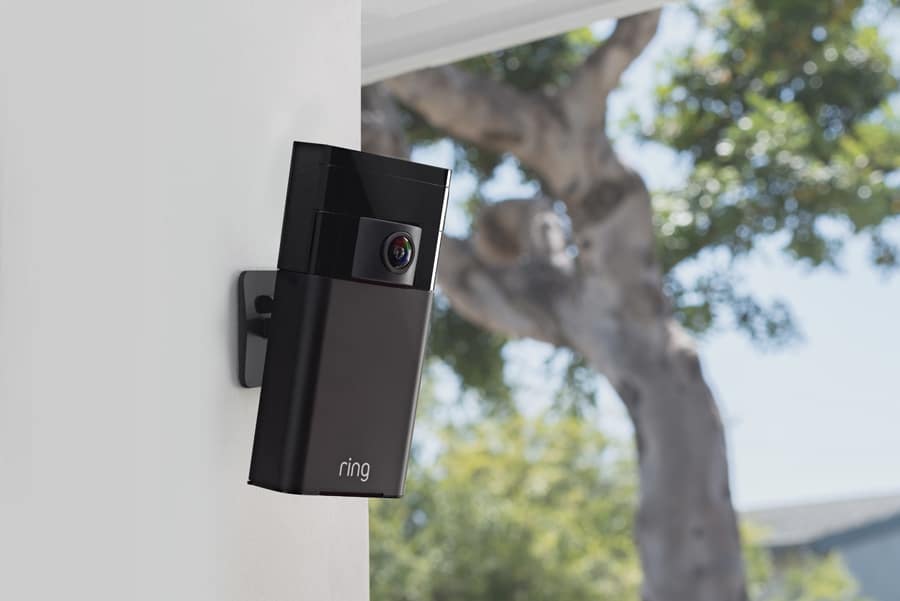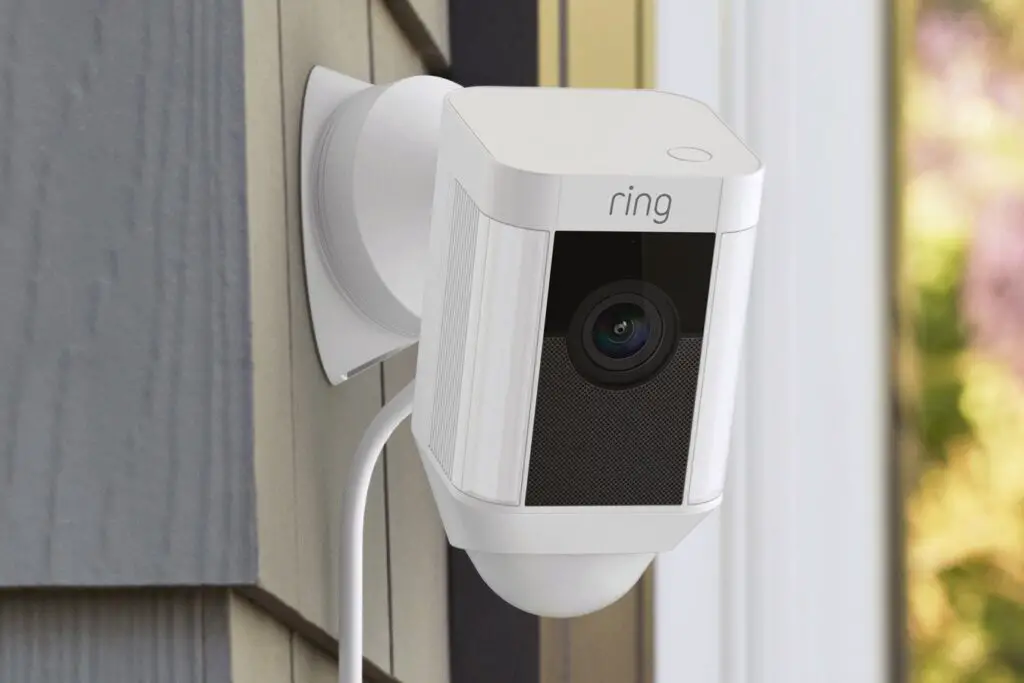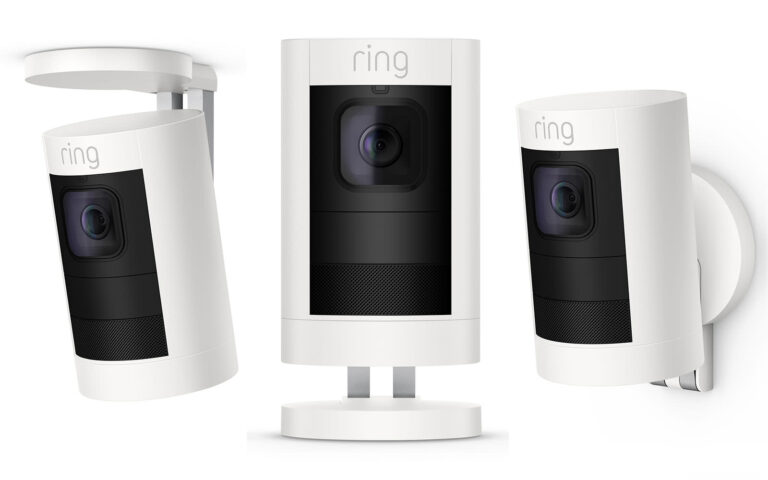Introduction
Why Does Ring Camera Go Offline: The advent of smart home technology has revolutionized the way we interact with our living spaces, promising enhanced convenience, security, and connectivity. One such innovation that has garnered significant attention is the Ring camera, a popular home security device developed by Ring, an Amazon-owned company. These cameras provide homeowners with the ability to monitor their properties remotely, receive motion alerts, and even communicate with visitors at their doorsteps. However, like any sophisticated technological device, Ring cameras are not immune to occasional malfunctions, one of the most common being the issue of going offline.
The sudden and perplexing phenomenon of Ring cameras going offline has left many homeowners puzzled and concerned. The loss of connectivity not only disrupts the camera’s primary purpose of monitoring the premises but also raises questions about the device’s reliability and effectiveness. This issue has sparked discussions among users and technology experts, prompting investigations into the underlying causes and potential solutions.
Understanding the factors contributing to this problem is crucial for both homeowners seeking uninterrupted security and for the developers of smart home technology looking to improve their products. To shed light on the matter, explore the technical aspects of Ring camera operations, including their connectivity protocols and network dependencies. Additionally, we will investigate external influences, such as signal interference, power supply issues, and software glitches that could trigger the offline state.

Why is my Ring camera offline?
When your Ring app shows your camera as offline, the first thing you should do is check that your Wi-Fi is up and running. Try connecting to the internet using a different device. If that device won’t connect, contact your internet service provider to check the status of service in your area.
If you find your Ring camera offline, it can be a frustrating and concerning experience, especially when it comes to ensuring the security of your home. Several reasons could contribute to this issue, and understanding them is crucial in resolving the problem effectively.
Network Connectivity: One of the most common reasons for Ring cameras going offline is a loss of network connectivity. If the camera’s Wi-Fi signal is weak or intermittent, or if there are issues with the internet connection, the camera may disconnect from the Ring servers, resulting in an offline status.
Power Supply: Ring cameras require a stable power source to function correctly. If there’s a power outage or a problem with the camera’s power supply, it may go offline.
Firmware or Software Issues: Outdated firmware or software glitches can lead to instability in the camera’s operations, causing it to disconnect from the Ring servers.
Router Settings: Certain router settings, such as firewalls or security configurations, might interfere with the camera’s ability to connect to the internet and result in an offline status.
Network Interference: Nearby electronic devices, walls, or other physical obstructions can cause interference with the camera’s Wi-Fi signal, leading to connectivity issues.
Environmental Factors: Extreme weather conditions or exposure to harsh elements might impact the camera’s hardware and lead to temporary offline status.
Ring Server Outages: In some cases, the issue may not be with your camera or network but with the Ring server itself. Server outages or maintenance can cause temporary disconnections.
What happens if Ring goes offline?
Any time your Base Station loses its connection to the internet, regardless of the cause, a cellular backup system kicks in that will allow the system to continue to monitor your home. Note: You will need to have Ring Protect Pro to use the cellular backup system.
Ring cameras’ offline status affects their functionality and the homeowner’s peace of mind. Users must know what occurs when Ring goes offline to protect their house.
Loss of Live Monitoring: Ring cameras are designed for real-time property monitoring. Users cannot remotely monitor their home when the camera goes offline since they cannot access the live video.
Motion Alert Disruption: Ring cameras’ motion sensors alert connected devices when activity is detected. Without motion alerts, homeowners may miss key events or security hazards if the camera goes offline.
Failure to Communicate with Visitors: Some Ring cameras have two-way audio, allowing homeowners to remotely communicate with doorstep visitors. This feature is unavailable when the camera is offline, affecting guest and delivery interactions.
Compromised Home Security: Without real-time monitoring and alerts, an offline Ring camera can leave a home vulnerable to intruders or suspicious activity.
In emergencies like break-ins or accidents, the camera’s offline status prevents live monitoring and motion alerts, delaying response times and reducing security system effectiveness.
Dependence on Local Storage: Some Ring cameras save footage locally. Using local storage limits recording accessibility when the camera goes offline, as users cannot access them remotely through the Ring app.
Technical Issues: Ring cameras may go offline due to network outages or environmental factors, but persistent connectivity issues may indicate technical issues that require troubleshooting or customer service.
How do I fix my offline Ring sensor?
Important!
- Slide the Contact Sensor off its base. Ensure that the batteries are installed.
- Press and hold the pinhole reset button.
- Continue holding down the pinhole reset button until the LED light turns red, then release.
- Re-add the Contact Sensor to your Ring Alarm using the Ring app.
Troubleshooting an offline Ring sensor can be frustrating, but there are several ways to get it back online. How to fix an offline Ring sensor:
Make sure your Ring sensor has a stable Wi-Fi connection. Weak or intermittent Wi-Fi can take the sensor offline. To improve connectivity, move the sensor closer to the router or use Wi-Fi extenders.
Make sure the Ring sensor has a reliable power source. Battery-powered devices should be checked and replaced as needed. For wired sensors, check power cables and connections for damage or loose connections.
Reboot the Sensor: Sometimes, a simple reboot can resolve connectivity issues. Turn on the sensor after a few seconds of powering it off. This can refresh Ring server connections. Check for Ring sensor firmware updates. Manufacturers often release firmware updates to address bugs and improve performance. Install updates from the Ring app or website.
Review Router Settings: Firewalls and security settings may interfere with sensor communication. Check your router’s settings and ensure that they are not blocking the sensor’s connection.
Reconnect the Sensor: If the sensor is still offline, try removing it from your Ring account and then re-adding it. This process can help re-establish the connection with the Ring servers.
Contact Ring Support: If none of the above steps work, reach out to Ring’s customer support for further assistance. They can help diagnose more complex issues and provide specific solutions to get your sensor back online.
Do Ring cameras record while offline?
Ring cameras are designed to work with a stable internet connection, and they require Wi-Fi to function properly. However, Ring cameras do have offline recording capabilities, which means that they can still record footage even when they are not connected to the internet.
Ring cameras don’t record offline. In case of internet outage or other technical challenges, a Ring camera cannot send data to the Ring servers or cloud. Thus, the camera cannot record or save footage during this time.
Ring cameras need a continual internet connection to feed live video and save information securely in the cloud. Ring app users may review events, view motion-activated recordings, and store films for later. The camera cannot record and upload data to the cloud without an internet connection.
Ring camera users need a stable internet connection to monitor and record. A good Wi-Fi signal and network setup are necessary for the camera to work. Maintenance checks for firmware updates and network optimization can prevent offline issues and maintain smooth recording and monitoring.
Can Ring camera work offline?
Short Answer: Ring cameras do not work without wifi.
There are numerous types of Ring cameras; namely, indoor, outdoor, and lighting cam. You’ll have to download the Ring app to control the device remotely. Therefore, you’ll need an internet/WiFi connection to make your Ring cameras work.
Ring cameras use cloud-based services and an internet connection for most functions. Some Ring characteristics allow limited offline use under certain situations. Let’s test Ring cameras offline:
Battery-Powered Camera Live View: The Ring Stick Up Cam Battery has “Live View on Demand.” The camera can be manually triggered to start a live video stream even while not online. This feature is limited and may not be available continuously.
Some Ring cameras, including the Ring Doorbell Elite, support microSD card local storage. This arrangement lets the camera record straight to the microSD card even if the internet is down. These recordings may not be accessible remotely until the camera is reconnected to the internet.
Limited Motion Detection: Ring cameras with local storage may detect motion and store motion-triggered events without an internet connection. The camera cannot notify users or access Ring’s cloud servers.
Ring cameras have some offline functionality, but their full range of functions and capabilities is only available when linked to the internet and integrated with the Ring app and cloud services. The Ring ecosystem offers real-time remote access, cloud storage for recordings, and advanced functions that require a stable internet connection.
Why is my Ring offline flashing blue?
Conclusion. Generally, a flashing blue light means your Ring Doorbell is connecting to a network during setup, has been successfully set up, or is currently charging. However, a flashing blue light can also indicate the device is booting up, the doorbell has been reset, or the front button has been pressed.
Your Ring gadget is in setup mode or trying to connect to the internet when its light flashes blue. The device usually flashes blue during setup or when trying to connect to Wi-Fi. The Ring device may flash blue in several situations:
Initial Setup: A new Ring doorbell or camera enters setup mode during setup. The gadget is ready to configure and connect to your Wi-Fi network when the blue flashing light appears. Ring devices will try to rejoin to Wi-Fi if their internet connection drops or if their network settings change. As it seeks for a new connection, the device’s LED will flash blue.
Resetting the Device: After a factory reset, your Ring device will enter setup mode and flash blue to prepare for reconfiguration.
Software Update: A flashing blue light may signal a firmware or software update.
Network Issues: The Ring device may go into setup mode and glow blue when it tries to connect to your Wi-Fi network if it is out of range.
What should I do if my Ring camera goes offline?
If your Ring camera goes offline, it can be concerning, but there are several steps you can take to troubleshoot and resolve the issue. Follow these guidelines to bring your Ring camera back online:
Check Network Connectivity: Start by verifying your internet connection. Ensure that your Wi-Fi network is working correctly and that other devices are connected to it. If there’s a problem with your internet connection, resolve it first before troubleshooting the camera.
Power Cycle the Camera: Turn off the Ring camera by unplugging it from the power source or removing the battery. Wait for about 30 seconds and then power it back on. This simple reboot can often fix temporary connectivity issues.
Check Camera Power: If your Ring camera is battery-powered, make sure the battery level is sufficient. If the battery is low, recharge or replace it. For wired cameras, ensure that the power source is stable and operational.
Review Wi-Fi Signal Strength: Check the camera’s Wi-Fi signal strength. If the camera is located too far from the Wi-Fi router, consider moving it closer or using Wi-Fi extenders to improve connectivity.
Check Router Settings: Some router settings, such as firewalls or security configurations, might interfere with the camera’s connection. Verify that there are no settings blocking the camera from accessing the internet.
Update Firmware: Ensure that your Ring camera’s firmware is up to date. Manufacturers regularly release firmware updates to improve performance and address bugs. Check the Ring app for any available updates and install them if necessary.
Reconnect the Camera: If the camera remains offline, try removing it from your Ring account and then re-adding it. This process can help re-establish the connection between the camera and the Ring servers.
Can a low battery cause my Ring camera to go offline?
Yes, a low battery can cause your Ring camera to go offline. Many Ring cameras are powered by batteries, and when the battery level becomes critically low, the camera may lose its ability to function properly and go offline. Here’s how a low battery can affect your Ring camera:
Disrupted Power Supply: When the battery level in your Ring camera drops to a critical point, the camera might not have enough power to maintain its essential functions, including establishing and maintaining an internet connection. This can lead to the camera going offline and being unable to transmit data to the Ring servers.
Inconsistent Performance: A low battery can cause the Ring camera’s performance to become erratic. The camera may turn on and off or experience intermittent connectivity issues, resulting in frequent offline episodes.
Limited Features: As the battery level decreases, the Ring camera might disable certain features to conserve power. This can include motion detection, live view, and two-way communication, significantly reducing the camera’s functionality.
Notification Delays: With a low battery, the camera might not be able to send low-battery notifications in a timely manner. This delay can lead to unexpected offline situations without any prior warning.
To avoid the issues caused by a low battery, it’s crucial to monitor the battery level regularly and recharge or replace the battery as needed. Ring provides users with battery level indicators in the Ring app, allowing you to keep track of the camera’s power status. For cameras with removable batteries, it’s a good practice to have spare batteries on hand to quickly swap them out and minimize downtime.

Conclusion
The factors causing Ring cameras to go offline has revealed a combination of technical, environmental, and software-related issues that contribute to this perplexing phenomenon. We have gained valuable insights into the complexities of smart home technology and the challenges it faces in maintaining seamless connectivity. The technical aspects of Ring cameras, identifying common connectivity protocols such as Wi-Fi and Bluetooth, which serve as the backbone of their operations. Fluctuations in network strength, signal interference, and router compatibility emerged as significant culprits behind the cameras’ offline episodes.
Moreover, power supply disruptions and firmware glitches were found ring doorbell to be primary internal factors that contributed to these outages. Furthermore, environmental influences cannot be ignored. Weather conditions, physical obstructions, and location-specific Wi-Fi congestion can adversely affect the camera’s ability to stay online consistently. Understanding these external elements is crucial for users when positioning their devices strategically. To address these challenges, we recommend regular firmware updates to enhance the camera’s stability and performance.
Users should also invest in quality routers and maintain a robust internet connection to minimize network-related interruptions. Positioning the cameras in optimal locations with minimal obstructions can significantly improve their connectivity. Ring, as a leading smart home technology developer, should continue investing in research and development to overcome these challenges. Improving the cameras’ firmware to handle temporary connectivity loss more gracefully and implementing adaptive network protocols can enhance their resilience in adverse conditions.

